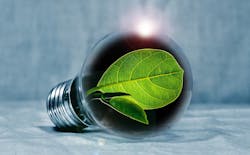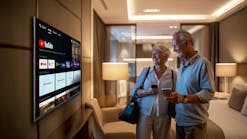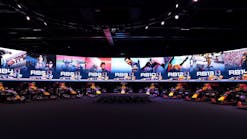The consensus method ANSI/IES TM-30 has been used increasingly since its introduction in 2015, offering superior accuracy and expanded scope of included information compared to predecessor tools for assessing color rendition. A number of specifications and standards now use TM-30, including the DesignLights Consortium Technical Requirements V5.1; ANSI/ASHRAE/USGBC/IES 189.1 Standard for the Design of High-Performance Green Buildings; ANSI/IES TM-33 Standard Format for the Electronic Transfer of Luminaire Optical Data; WELL Building Standard V2; and the U.S. Department of Defense Unified Facilities Criteria for the Design of Military Medical Facilities. Beyond this, TM-30 is commonly reported by lighting measurement equipment and the data is usually available from lighting manufacturers.
TM-30’s multifaceted approach allows for much more targeted product development and specification. Users are no longer tied to a one-metric, higher is “better” system, and can now more readily evaluate how a light source affects different colors in different ways. In turn, that information can be used to design or select a product that will achieve a specific goal, such as increasing the vividness of a scene, making colors look more natural, or addressing the color appearance of a specific object. All of this means that more tailored and optimized solutions can emerge that better balance color rendition and other performance aspects, like energy efficiency. However, making the most of TM-30 requires people who use the method to be more knowledgeable and intentional. A new tutorial article authored by Pacific Northwest National Laboratory and published in LEUKOS consolidates a range of updated information to assist with best practices.
The tutorial, entitled “Background and Guidance for Using the ANSI/IES TM-30 Method for Evaluating Light Source Color Rendition,” takes the form of a series of questions with answers, including information about the development of the standard, color rendition fundamentals, TM-30 measures and their meaning, TM-30 calculation details, and application of TM-30.
The tutorial covers two new TM-30 annexes from 2019—Annex E and Annex F. Annex E provides guidance for applying the measures defined in TM-30 and documents important considerations for specifying light source color rendition. This includes recommended specification criteria that link specific color rendition attributes with intended outcomes. Annex F provides additional background and evidence to support the recommendations for specifying light source color rendition provided in Annex E. These two annexes are included with ANSI/IES TM-30-20—the latest iteration of the standard—which is freely available for download from the IES web store (https://store.ies.org/product/tm-30-20-ies-method-for-evaluating-light-source-color-rendition/). TM-30-20 is a republication of TM-30-18 with the annexes included, and no other technical changes.
Download the tutorial: https://www.energy.gov/eere/ssl/tm-30-frequently-asked-questions.
Contact:
Pacific Northwest National Laboratory (PNNL) - Advanced Lighting on behalf of US Department of Energy, Office of Energy Efficiency & Renewable Energy (EERE)





